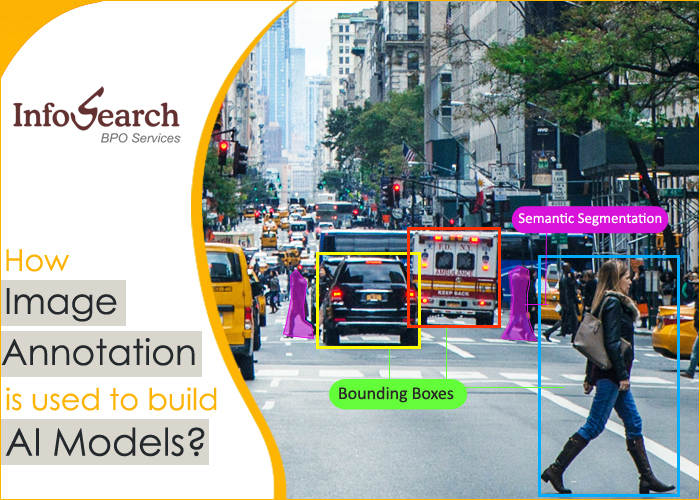
WHAT DOES IT EXACTLY MEAN BY IMAGE ANNOTATION?
Image annotation is described as the process of adding labels to an image, which is usually done manually but may also be done with the assistance of a computer. As a machine learning engineer chooses labels, the AI model gives information about what needs to be seen in the picture. By tagging images, machine learning experts can pinpoint crucial parameters that affect their model’s overall precision and accuracy.
Possible naming and classification difficulties, how to depict obscured items, how to deal with essential sections of the image that are unrecognizable by experts, etc., are all examples of things to consider while creating an image.
HOW DO YOU ADD ANNOTATIONS TO AN IMAGE?
To annotate, for example, a person applies a sequence of labels to the appropriate items using bounding boxes. For example, people are indicated in blue, taxis in yellow, and trucks in orange. The number of labels might change based on the business use case and project on another part of each image. Depending on the project, you may just need one label to represent the complete image (e.g., image classification). Multiple items inside a single photograph might need to have their labels in other projects (e.g., bounding boxes).
Visual perception-based computer vision technology trains AI models, which can only see things through pictures or videos. A unique approach is used to annotate or identify the pictures’ subject matter. Once these pictures have been tagged on a vast scale, they may be utilized as training data.
In AI model training, the annotated pictures are utilized for training the AI algorithms. Because the method helps the machine identify and memorize specific types of patterns, it may be correlated and used in real-life situations, such as evaluating comparable data.
HOW AI MODELS ARE BUILT USING IMAGE ANNOTATION?
When it comes to annotations, there are a variety of options. Different annotation types may be used to produce an innovative labeled dataset. Data scientists and AI model developers can choose from them. The following are the three most frequent forms of computer vision annotations:
1) Classification
2) Object detection
3) Picture segmentation
To identify a whole image, the objective is to determine which objects and other attributes are present in the image. Or for picture object detection to identify specific item’s positions (bounding boxes). Or, if you want to know what’s in a picture at the pixel level, you’ll need to use image segmentation to do that. An image has at least one class for every pixel instead of object identification where the bounding boxes of objects might overlap.
Once the pictures have been annotated, they are fed into the algorithms to train the model. Machine learning experts additionally utilize the AI Model Validation Service to check the correctness and whether the model has been correctly prepared. The greater the variations in data annotation, the higher the accuracy of AI models.
Final words!
The quality of annotation services for AI models is critical for the best accuracy of model predictions. As a result, images should be well-annotated by professionals so that robots can simply and reliably detect things. But it is also vital that annotators utilize the proper tools or annotation software in order to create high-quality training data for an AI model.
So, select a well-known company that offers image annotation services and is well-versed in AI model building to work with. Choose a managed service team that can assist you in installing and operating your AI projects no matter what your data annotation demands may be. Like, be it in a wide range of sectors like healthcare, retail, robotics, and agriculture, choose one where you can benefit the most from the image annotation solution. So, it’s best to have the photos annotated by industry specialists rather than doing it yourself.
Contact us:
Infosearch BPO is a known name in the annotation industry with excellent track record on completing projects on time and with highest quality. The company is ISO 27001:2013 certified for Information Security Management (ISMS) and with GDPR compliance. Infosearch executes projects from their facility using in house employees. The company serves AI, Image recognition, Autonomous vehicle, Retail, Robotics etc. Do contact us for all your requirements.







Recent Comments